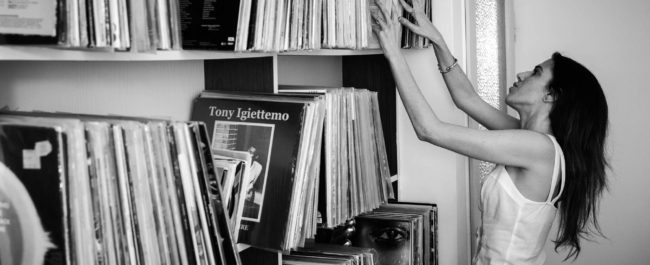Shira Medina – Connect Through Music
Words by Markey Funk | Photos by Eilon Paz
e’re meeting Shira, 35, at her apartment in Rehovot, where she had moved with her partner almost a year ago: record shelves are sharing the room with instruments and sound gear, and nothing really hints at her day job as an English teacher. Growing up surrounded by music from day one, she jumped into the vinyl rabbit hole only in her 20’s. Yet, there’s very little randomness in her modest collection; every record has its value, personal meaning or cherished memory. Every piece of vinyl is a treasure, which she enjoys sharing with anyone willing to listen.
When asked about her relation to records, she says: “It’s mostly passion and the love of music. Music saved my life more than people ever will and I’m forever thankful for it.”
It is true that you can learn a lot about a person through the subject of their passion. Over the course of this interview, we realized how much of Shira’s personality reflects in each and every LP and 45 that we happened to discuss. What started as yet another chat about vinyl collecting, has soon unfolded into a stroll across personal stories told through the record grooves.
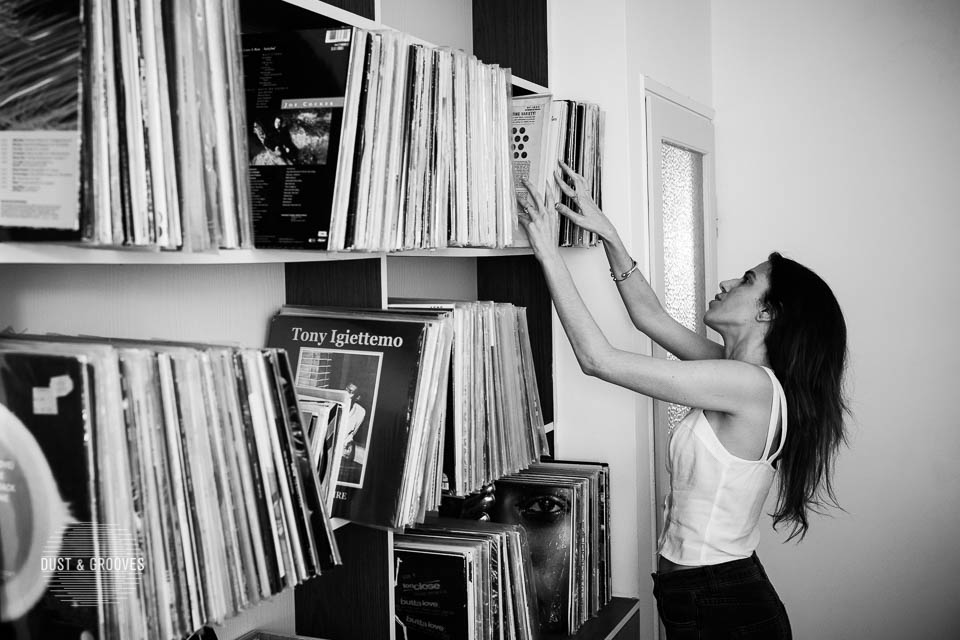
How did it all start for you?
It started with curiosity: about a decade ago, there was this 7inch EP by Quincy Bright, and only one tune was available on YouTube. I liked it a lot and really wanted to hear the rest of the record, so I looked it up on Discogs and bought the vinyl. I didn’t even have a record player yet.
Later on, I found this guy who was selling a Technics deck with a hundred hip hop records – all for a reasonable price. So I said to myself: I’m buying a turntable anyway, so why not? That’s how my collection started.
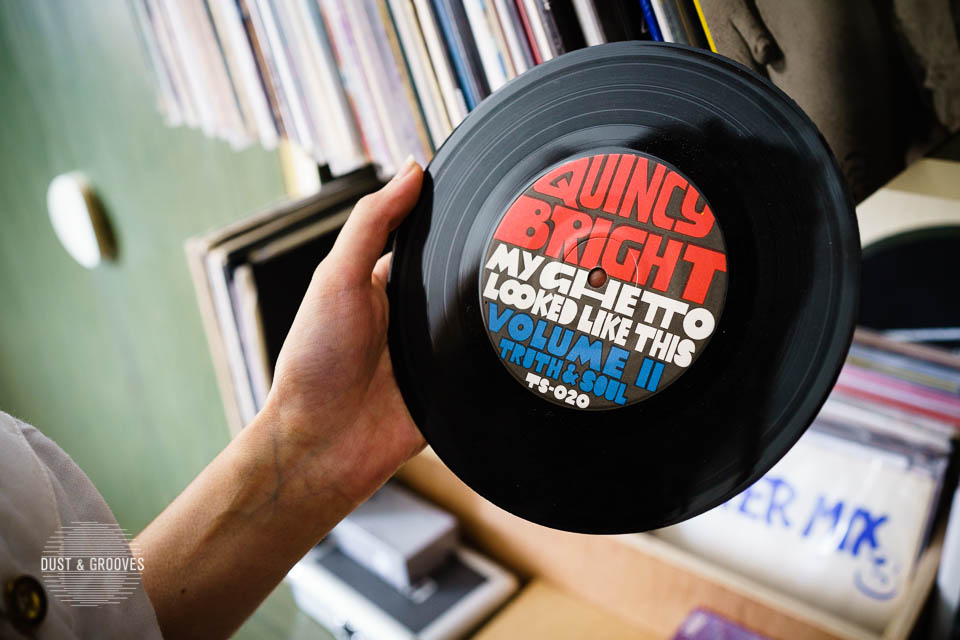 Quincy Bright – My Ghetto Looked Like This. Hip hop beats. The 7” that made me start collecting because most of the songs weren’t online.
Quincy Bright – My Ghetto Looked Like This. Hip hop beats. The 7” that made me start collecting because most of the songs weren’t online.
When I got into record digging, I used to hang out with DJ’s as friends and go with them to live shows, record shops and fairs, sharing knowledge, discussing what we found that day and just having fun, so it got me going. People who understand my style and what I bring to the table became friends and we share the love of it together.

What was your initial interest in music? Did you get influence from your family? Do you play any instruments?
There are many artists and musicians in the family, some of whom have influenced the Israeli culture a great deal. I have a cousin who is a pop star now which is really amusing because it’s so different from what I do and what I want to represent. In my childhood, my dad had friends and family members come over during the weekends and they sang and played until two in the morning. He still does that. I remember music playing in my house all the time, mostly oriental music. My next-door neighbour was this really geeky kid that only liked playing the drums and the piano and refused to go to school. I used to wait to finish classes so I could play with him every day, he turned out to be a music prodigy and he really made it in New York. Nowadays, I play the drums and produce. I wish I knew that this interest was that serious for me. Maybe people would have enjoyed what I do and the records I collect. The fascination with music and making art was always there and it’s been a part of my identity for so long.
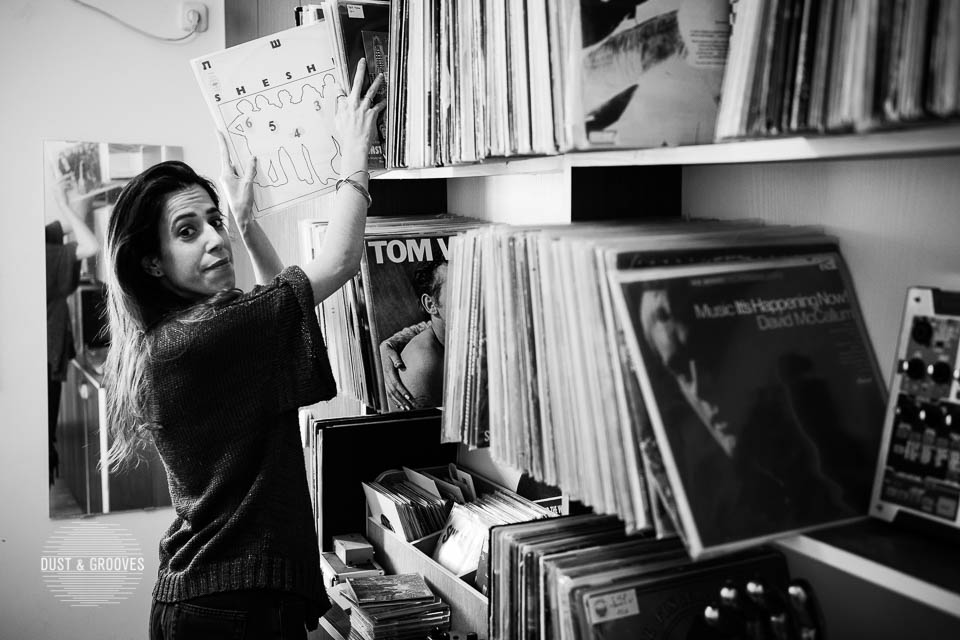
 Sheshet – Sheshet (1977). Jazz-Rock from Tel Aviv.
Sheshet – Sheshet (1977). Jazz-Rock from Tel Aviv.
Why vinyl? Is it the sound of it? Or maybe the archival qualities? Or another romantic reason?
Everything about it is romantic and magical: the sound is warm, you need to take special care of it so you appreciate it much more than mp3s, I even like the sound of crackle and pop a bit, and then you can make different music with it – synchronizing two records or sampling.
 Andre Previn – Rollerball (Original Soundtrack Recording) from the US. Favorite track: Executive Party Dance.
Andre Previn – Rollerball (Original Soundtrack Recording) from the US. Favorite track: Executive Party Dance.
Are there any particular genres or sounds that you gravitate to these days?
I’d say that for me, it’s very much about the sophistication of Jazz and the beauty of simplicity in Hip Hop.
I also collect funk, soul, library music, a bit of reggae and dub, there’s a section of “weird stuff” that contains all sorts of records that are hard to categorize by just one genre, some beats and African grooves… I still don’t have enough Brazilian music, which is a bummer – but I’m working on that!
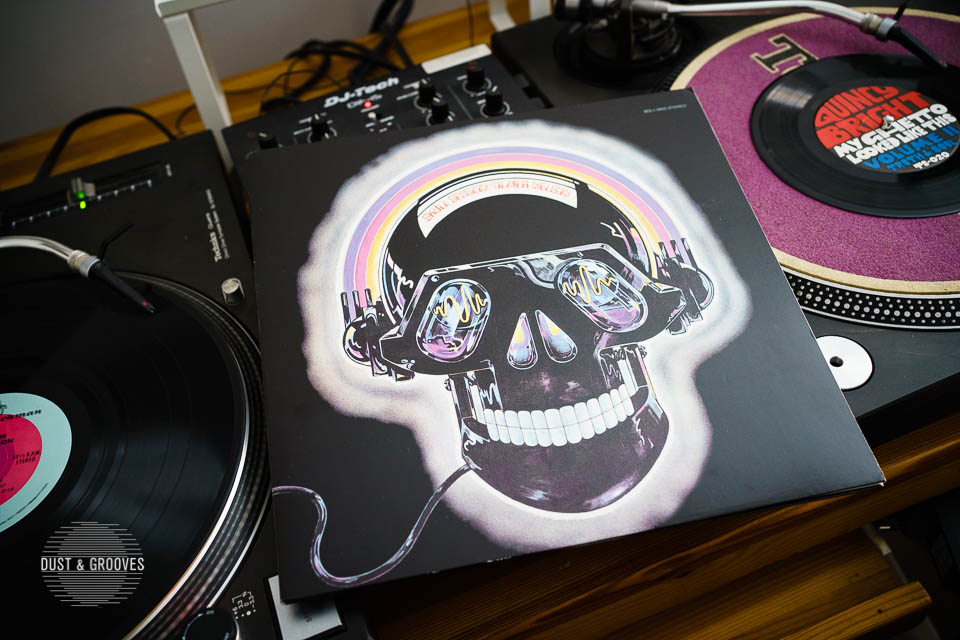 Oliver Nelson – Skull Session. Jazz funk recorded in 1975 for the ‘Flying Dutchman’ label. A line-up of really talented musicians including Lonnie Liston Smith on the keys.
Oliver Nelson – Skull Session. Jazz funk recorded in 1975 for the ‘Flying Dutchman’ label. A line-up of really talented musicians including Lonnie Liston Smith on the keys.
 Gil Scott Heron – Spirits.
Gil Scott Heron – Spirits.
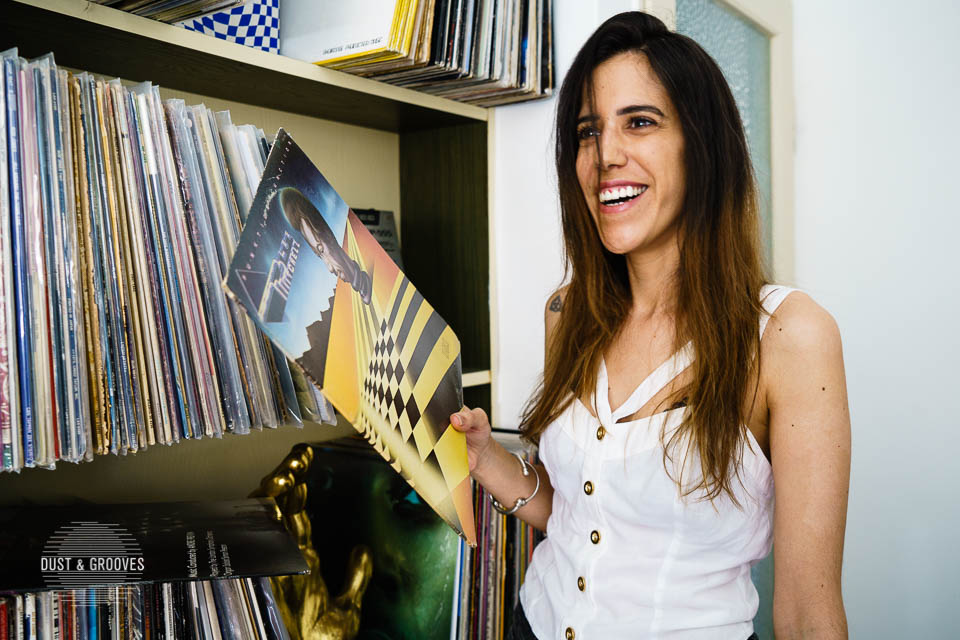 Blue Mitchell – Funktion Junction. This 79’ release Jazz album is from the US. Favorite track: Delilah.
Blue Mitchell – Funktion Junction. This 79’ release Jazz album is from the US. Favorite track: Delilah.
Anything specific that attracts you in records while digging?
I guess, besides the music itself, my focus is often on potential samples. I like finding drum-breaks, of course. Many of the records I’ve bought are yet to be chopped. But overall, it’s really just about interesting sounds and tunes that resonate with me in some ways.
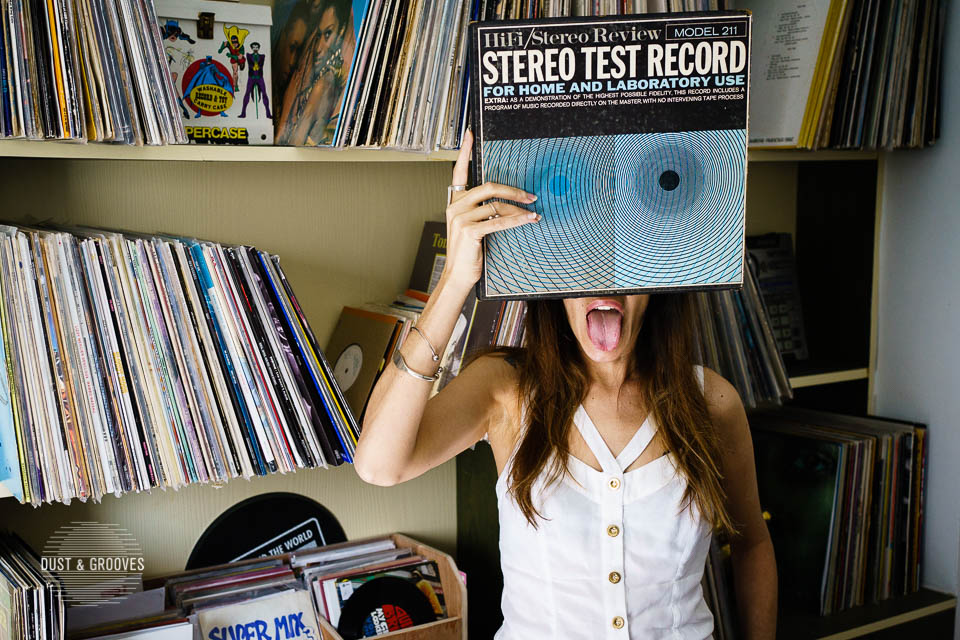 Stereo Test Record that I picked up for sampling.
Stereo Test Record that I picked up for sampling.
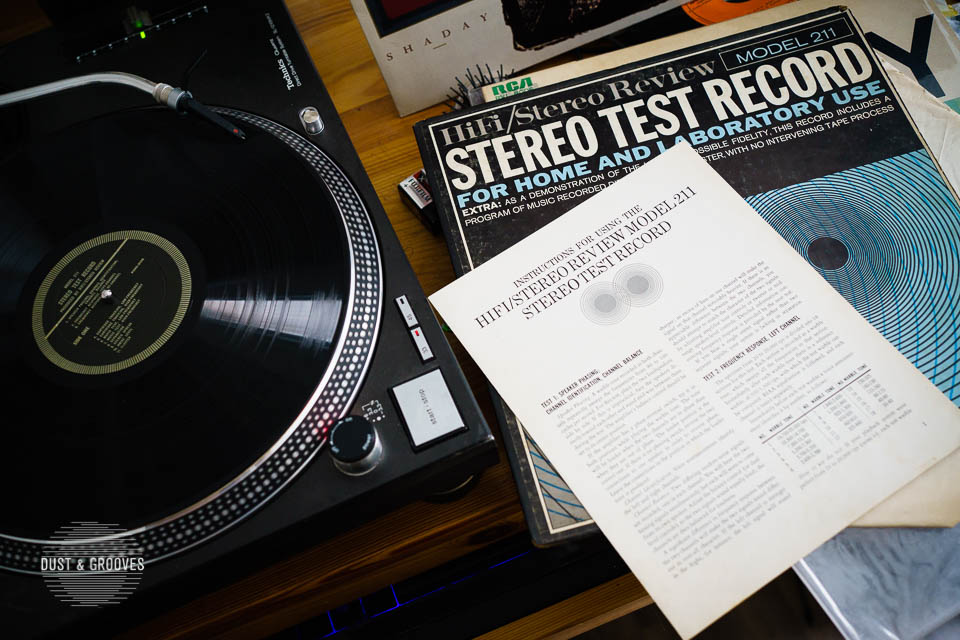 Model 211
Model 211
Do you travel to find records? Where? How often?
Every time I travel I make sure to go and visit the nearby record shops or make a few days dedicated to it. Some of my travels can be all about digging. I had a great dig in Italy two years ago. I did a road trip where I travelled from the north to the south of Italy. My favourite place was Sleeve records in the centre of Florence. Sleeve Records is one of those record hubs for underground dance music, two brothers that started to operate as a record label as well releasing some undiscovered house. Make sure to check them out, they helped me find great records with patience, shared knowledge and they can really hit the spot in terms of what you’re looking for. I found nice library records there and Italo-Disco, really enjoyed spending the whole day there.
England is one of my favorite places in the entire world – it almost feels like the second home. I used to travel to England every year to see live shows and go to record fairs that I found through friends. I love the culture there and digging in thrift shops, finding records in places you wouldn’t expect.
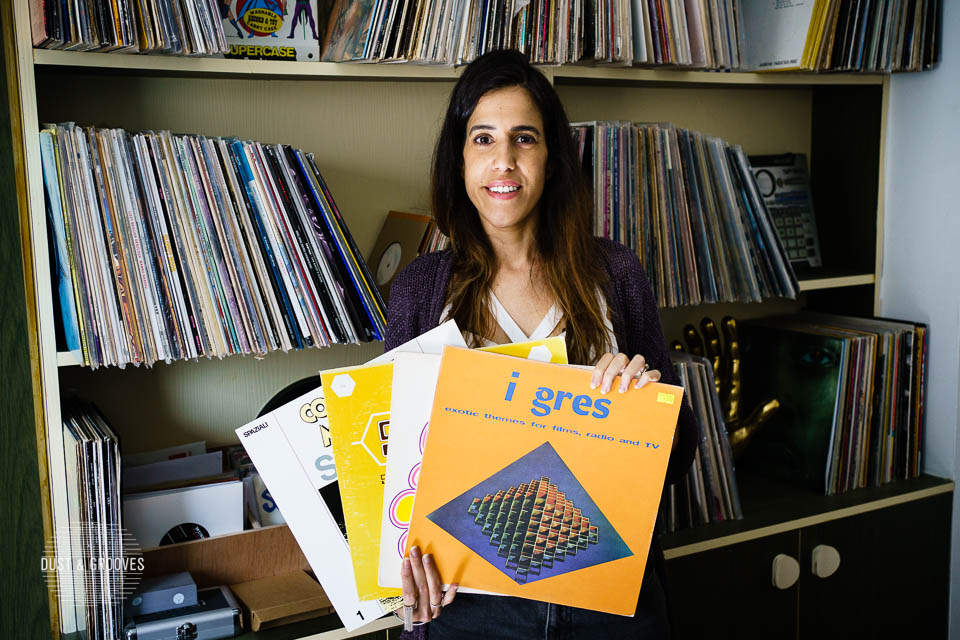 I Gres – I Gres Vol. III. Italian library.
I Gres – I Gres Vol. III. Italian library.
A visual artist yourself, how often do you buy records for the sleeve artwork alone?
Actually, not so much. I really need to connect to the content before I buy. There are very few covers that I really like and that inspire me visually – like David Stahlberg’s art for “Dreams” by Gabor Szabo, for instance. I like his style and he only did that album, he doesn’t have anything else, not many works online too and not enough information about the artist, so I decided to make artworks to honour his style, it’s available on my Instagram.
I do like the repetitive generic style of library LP’s though. It’s something plain that makes them easily recognizable and in a way intriguing. Just look at those SPM records! I like that sleeves are looking almost like homemade – with catalogue numbers hand-written in the corner.
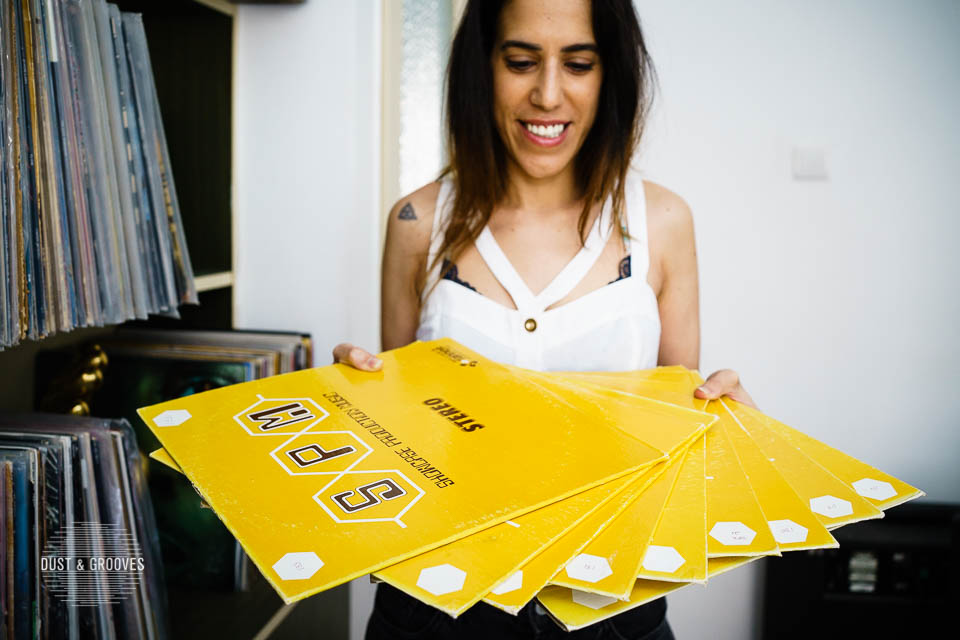
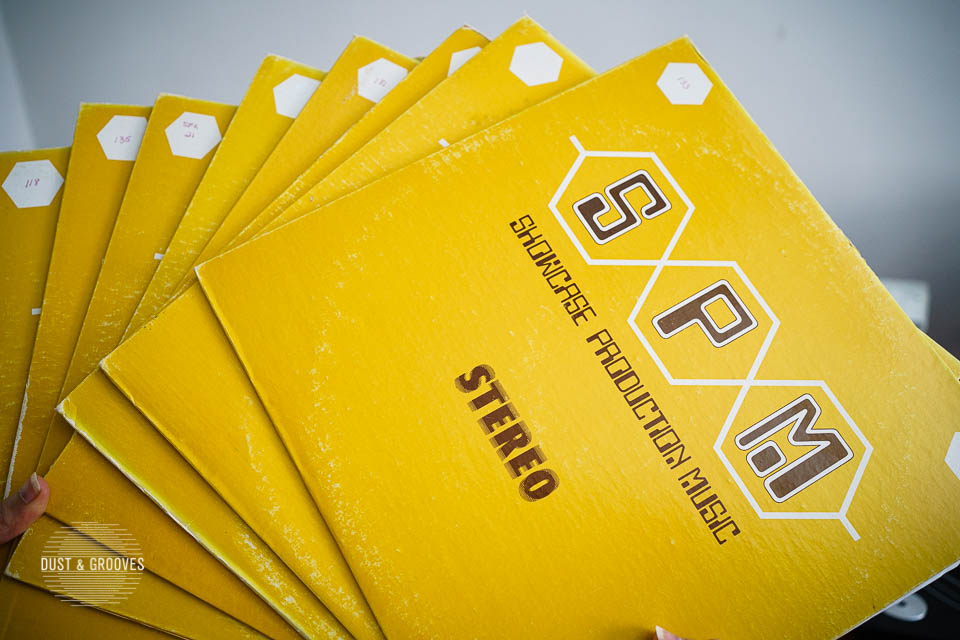 Showcase Production Music. Under William B. Tanner Company label, Various styles and rhythms. theme/ stage & screen. Came before KPM.
Showcase Production Music. Under William B. Tanner Company label, Various styles and rhythms. theme/ stage & screen. Came before KPM.
That was going to be my next question – library music. You’ve got quite a nice pile. Please, expand on that.
Besides containing some rather nice tunes, I like their strong focus on the music itself. You don’t see faces on the sleeve, the artists are just names in the credits, and the music and its functionality are the main focus. I mean, after all, that’s really what we buy records for, isn’t it?
The aspect of anonymity is also something I strongly relate to. I like the idea of wearing a mask, like DOOM, or just hiding my persona and letting my art move to the forefront.
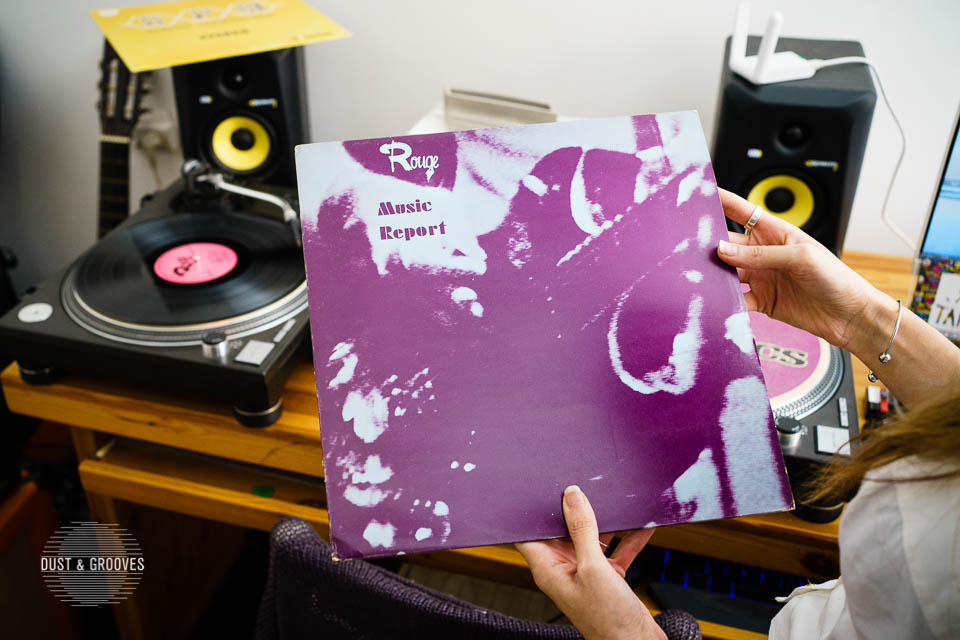 Music report by The Clear Light Band on the British Rouge label.
Music report by The Clear Light Band on the British Rouge label.
How much do you focus on local Israeli records when digging? Do you mainly buy stuff according to the range of genres that you’ve mentioned earlier – or also based on sentimental value?
Oh, this is totally one of the main themes in my collection. I like the Israeli musical heritage a lot! To me, it’s also important to support the local culture. There’s plenty of beautiful releases over here – not necessarily famous (that’s a different topic entirely). I also think that lately, these artists have become more recognized by the global community.
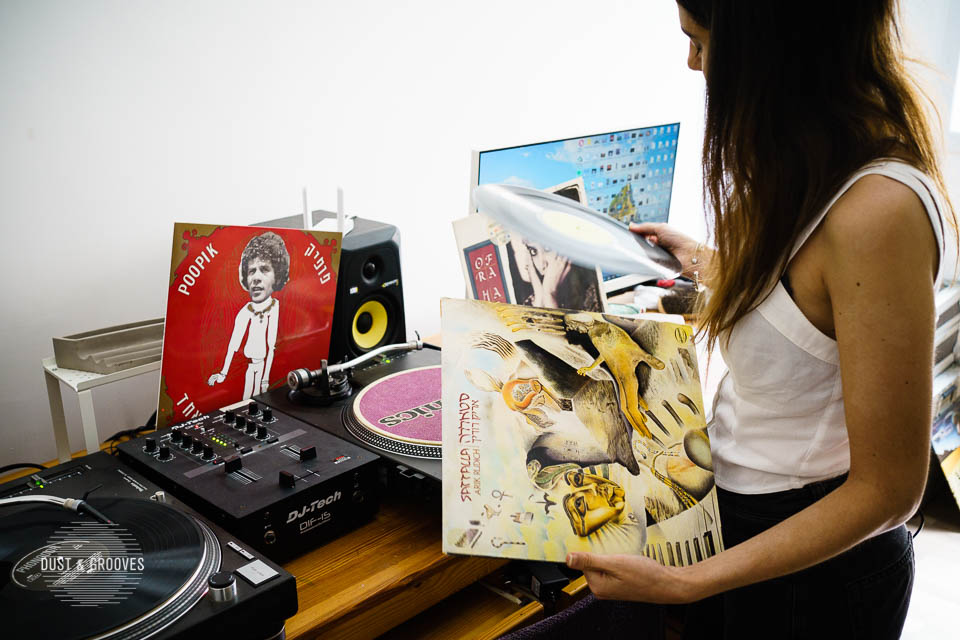 Arik Rudich – Sattalla. Israeli synth-pop, dreamy ambient from ‘81.
Arik Rudich – Sattalla. Israeli synth-pop, dreamy ambient from ‘81.
Arik Rudich is a personal favorite because he dared to do his own style with heavy use of synthesizers that goes so well with the lyrics and the tone of his voice.
The title song “Sattalla” is about a girl and how she is “the most beautiful goddess”. He seemed to love and adore her but she passed away. Same as a friend of ours – a true goddess, a female Hendrix. Her passing took a lot of energy from everyone. Similar to the story in this song. Music doesn’t have to be happy or popular – it just has to meet you in those places where no one else can understand. For me, that means a healthier healing process.
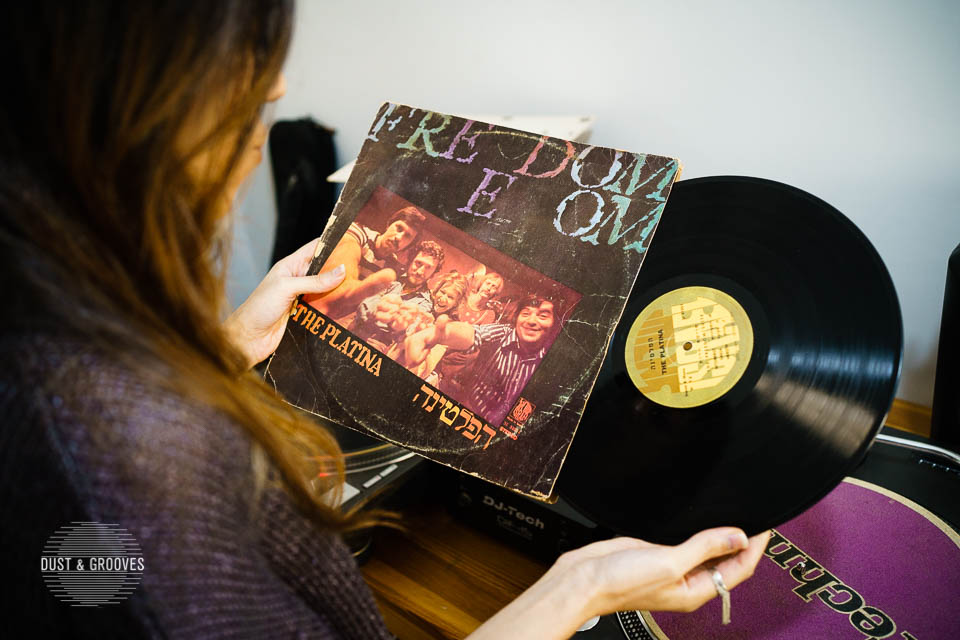 The Platina – Freedom (1974). Israeli jazz ensemble.
The Platina – Freedom (1974). Israeli jazz ensemble.
Platina is an amazing jazz band to which I felt strongly connected. I love this LP so much that I used to bring it with me everywhere when I travelled – and sometimes even played it in record shops in order to give them more exposure and let people know who they were. Looking back, that seems a bit weird to do: going to record places in London and playing Israeli Jazz music – but everyone enjoyed it and wanted to buy it from me. That was a funny phase in my life.
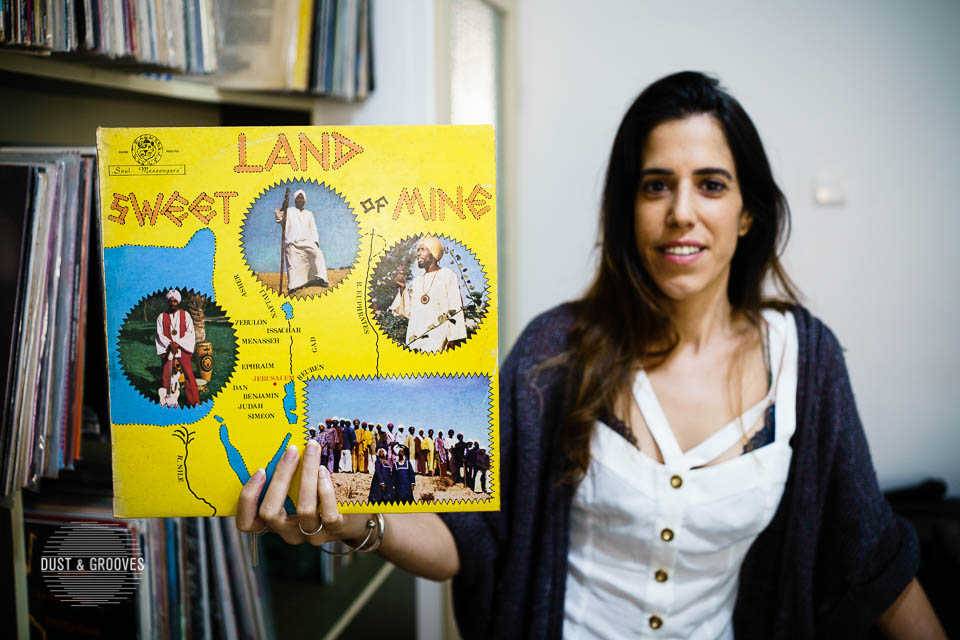 The Soul Messengers – Sweet Land Of Mine. Sweet soul, funk, spaced out spiritual free jazz from 1976.
The Soul Messengers – Sweet Land Of Mine. Sweet soul, funk, spaced out spiritual free jazz from 1976.
Original songs by several artists of the Black Hebrew Israelite Community from Dimona, after making their way back to Israel–their home and holy land.
I got familiar with Sweet Land of Mine 4 years ago through a DJ who lives in London. I was amazed that this beautiful piece came from Dimona and fell in love immediately. I’ve got two copies – just in case.
I also buy records that I remember from my childhood, and there are some that I’d definitely want my future kids to grow up with – like these LPs by Tzipi Shavit.
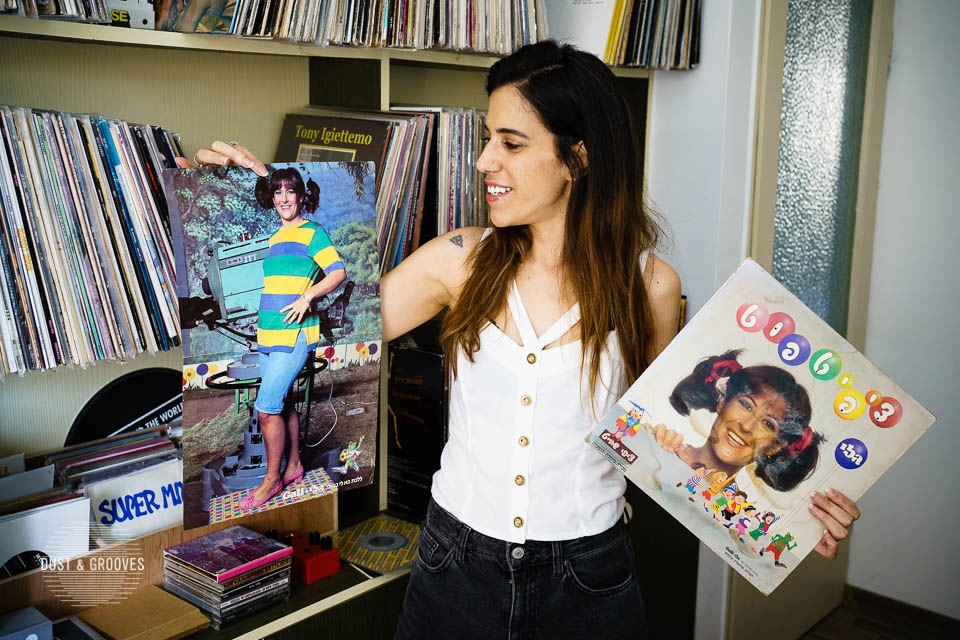 Tzipi Shavit. Israeli children’ record from a very well known entertainer.
Tzipi Shavit. Israeli children’ record from a very well known entertainer.
Any crazy digging stories?
Alright, this is a special one: my dad used to sing “The Drunk Song” by Hofni (mizrahit singer from the ‘70s) every time he was coming home after a night out with friends. And he has this beautiful voice, so this song has always been one of the nice and funny childhood memories. A few years ago, I heard someone playing it at Romano [famous hi-fi restaurant in Tel Aviv – ed.] and I realised that it has this almost jazzy arrangement – very untypical for the standard mizrahit pop sound of the time. So I kind of rediscovered this very familiar song from a completely new perspective. This too is one of the exciting things about digging – experiencing familiar music from a different angle.
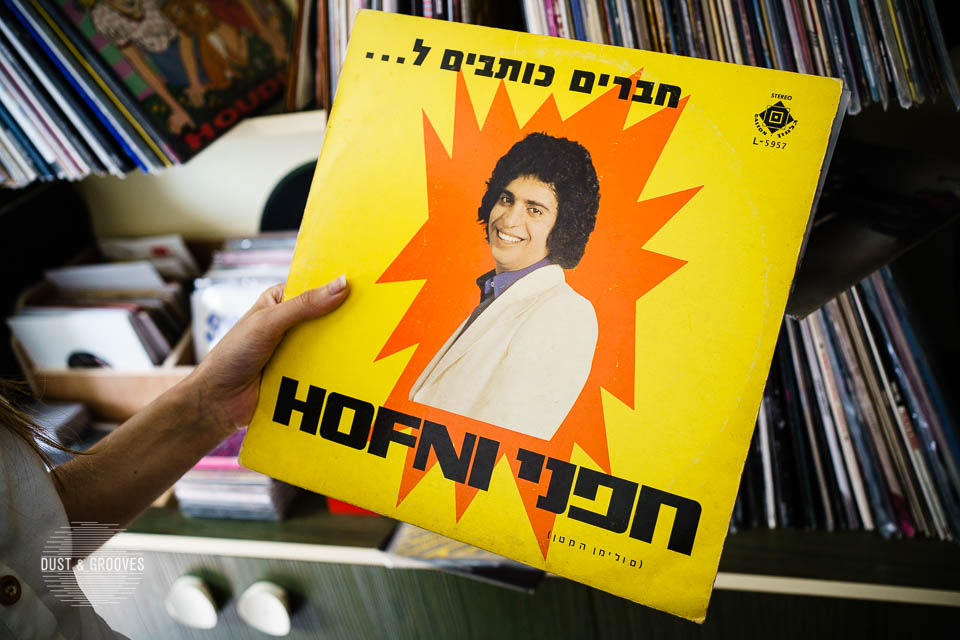
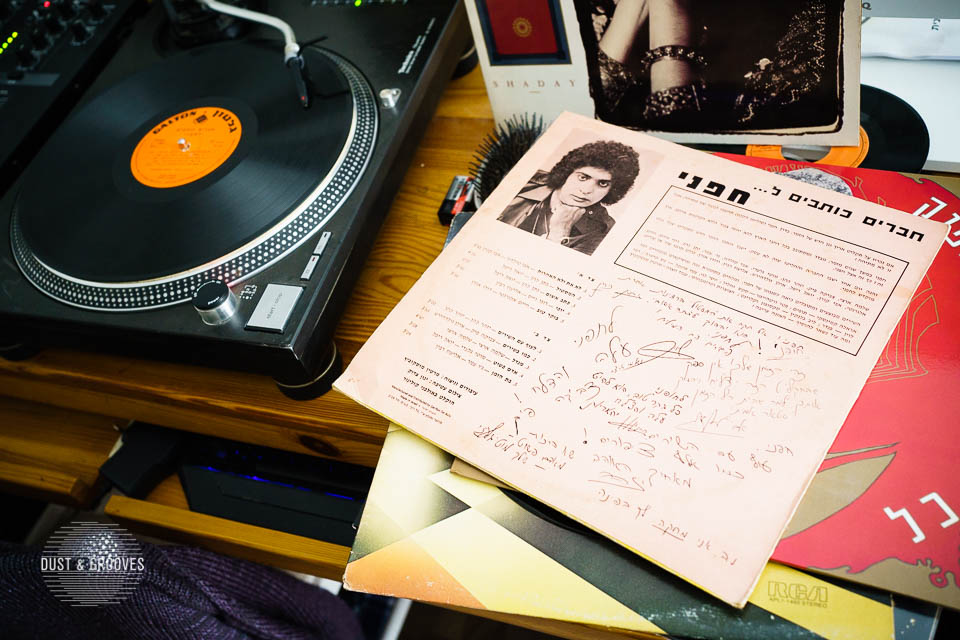 Hofni – Friends Write to Hofni (1978). Mizrahi jazz vibes. My dad used to sing it all the time.
Hofni – Friends Write to Hofni (1978). Mizrahi jazz vibes. My dad used to sing it all the time.
Another story is with this Ofra Haza LP: When I travelled to visit a friend in Austria, I spent most of my time there by myself because she needed to study. I played the song “Someone Always Walks with Me” by Ofra Haza, I don’t normally listen to her but it made me feel good back then so I had it on repeat. The first record shop I walked into, I saw her record with that song in the bargain bin! Made me feel connected to this world through music.
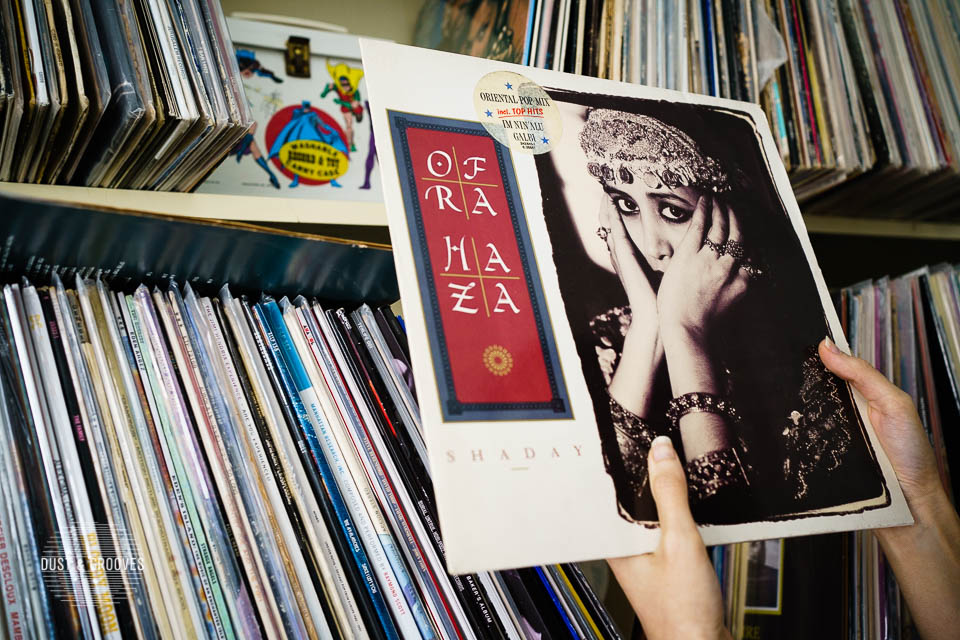 Ofra Haza – Shaday. Including the famous Im Nin’Alu track.
Ofra Haza – Shaday. Including the famous Im Nin’Alu track.
What about reissues?
Always prefer buying originals, yet, for obvious reasons, I do sin sometimes. Of course, I’d rather wait a bit longer for a certain record, than jump on a new pressing, but some of the prices these days are just ridiculously high.
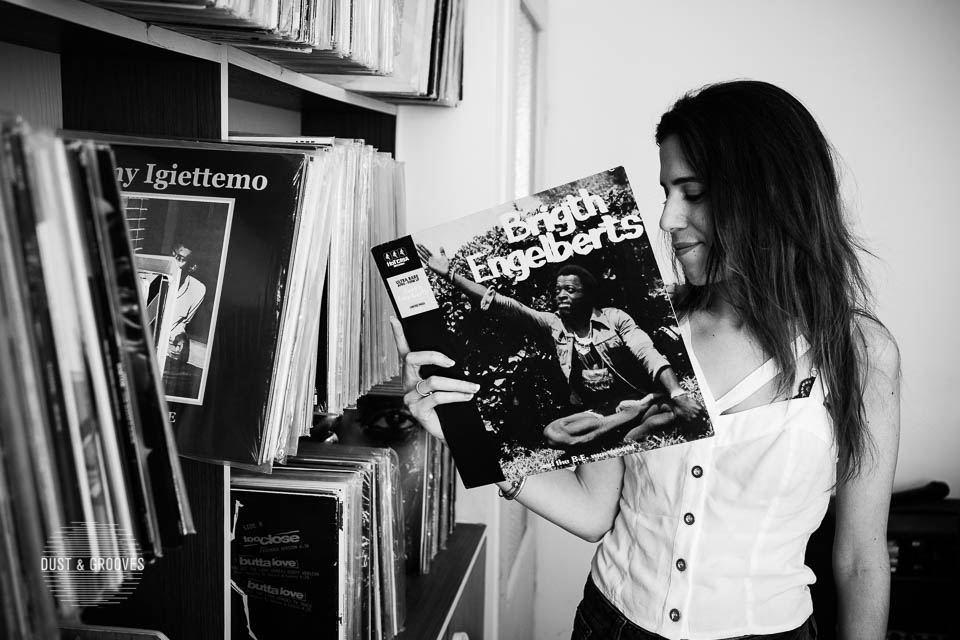 Brigth Engelberts And The B.E. Movement – Tolambo Funk. (1978). African funk. Deep and funky afrobeat.
Brigth Engelberts And The B.E. Movement – Tolambo Funk. (1978). African funk. Deep and funky afrobeat.
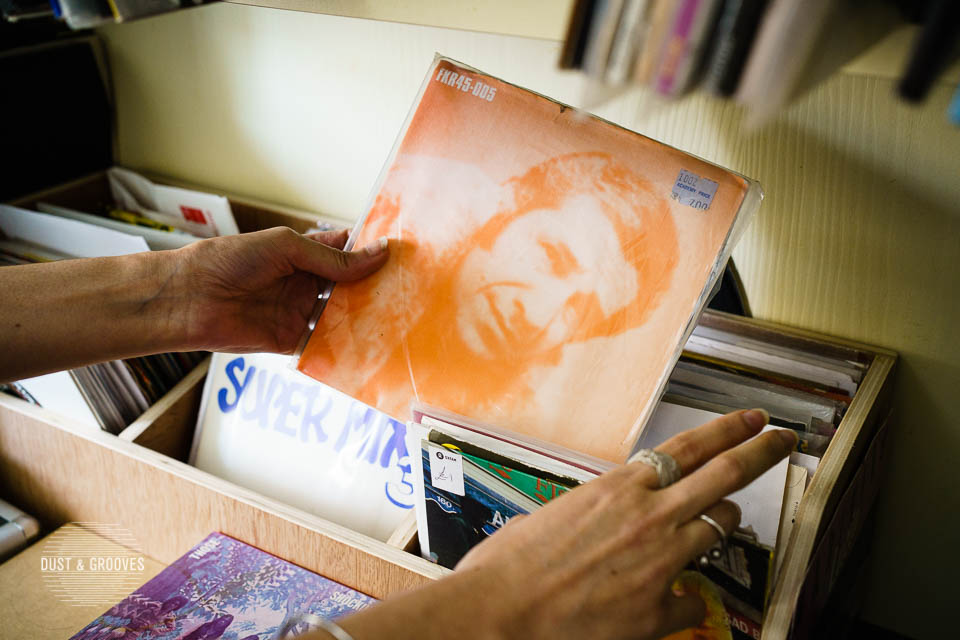 Mehrpouya – Soul Raga. Finders Keepers Limited edition 7” reissue for the psychedelic funk Iranian music released in 2010.
Mehrpouya – Soul Raga. Finders Keepers Limited edition 7” reissue for the psychedelic funk Iranian music released in 2010.
For me, it’s important to buy second-hand vinyl also from the ecological perspective. When you create a demand for reissues, you actually encourage further plastic proliferation. So ideally, I prefer buying the plastic that already circulates out there and avoid turning it into waste.
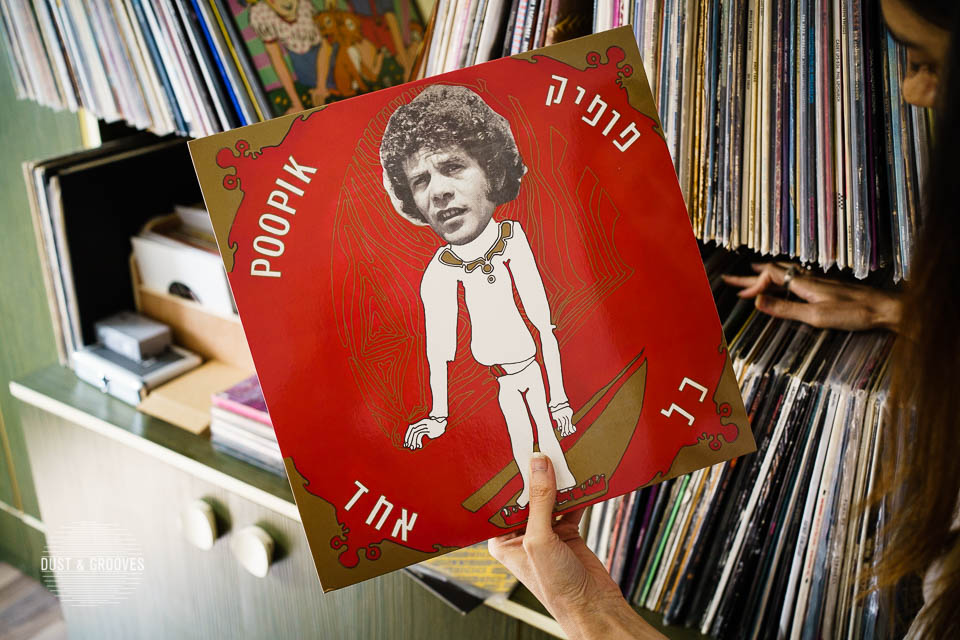 Poopik Arnon – Everyone. Originally released in 72 was a well known actor and singer from Israel.
Poopik Arnon – Everyone. Originally released in 72 was a well known actor and singer from Israel.
What’s your partners’ reaction to this obsession?
He’s a talented musician, so he gets it. We practice together and enjoy sharing our interests. He thinks I’m cool for understanding and knowing lots of music and he helps me. I appreciate his understanding of my passion and I give him time and space to practice too.
Can you name some of the stores, trade shows, flea markets, thrift shops you go digging? If they don’t exist anymore, mention them anyway (mark them RIP).
I enjoy going to Kaplan record store in Tel Aviv, Gali Records in Jerusalem and record fairs when they happen. Now, I’m mostly digging online for specific records I would want.
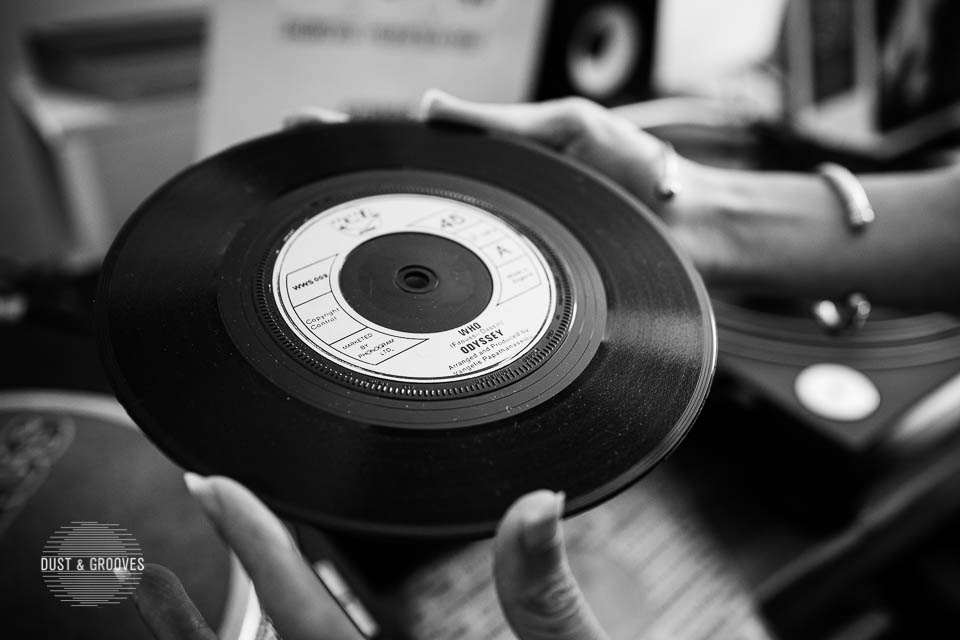 Odyssey – Who. This ‘74 Psychedelic gem that was arranged and produced by Vangelis Papathanassiou but still has mystery around how much he was involved in this.
Odyssey – Who. This ‘74 Psychedelic gem that was arranged and produced by Vangelis Papathanassiou but still has mystery around how much he was involved in this.
Is there an album or 7” that you are trying to find, unsuccessfully? What would you give for it?
I would love to have Lena Platonos’ “Shadows Of Blood” limited edition 12”.
Out of your great collection, there must be a few records that you like going back to at any time. What makes them so special for you?
Ian Carr – Roots; the drums are hypnotic, a masterpiece!
Galt MacDermot – Up from the Basement; one of the founders of hip hop in my opinion;
BJ Ward – Vocal Ease; I really like “The Loner” – just as much as I like the famous “Word on Word”;
The Lollipops – the song “Naked When You Come” reminds me what’s real in life;
Aguaviva – La Casa De San Jamás; great record that always hits the spot.
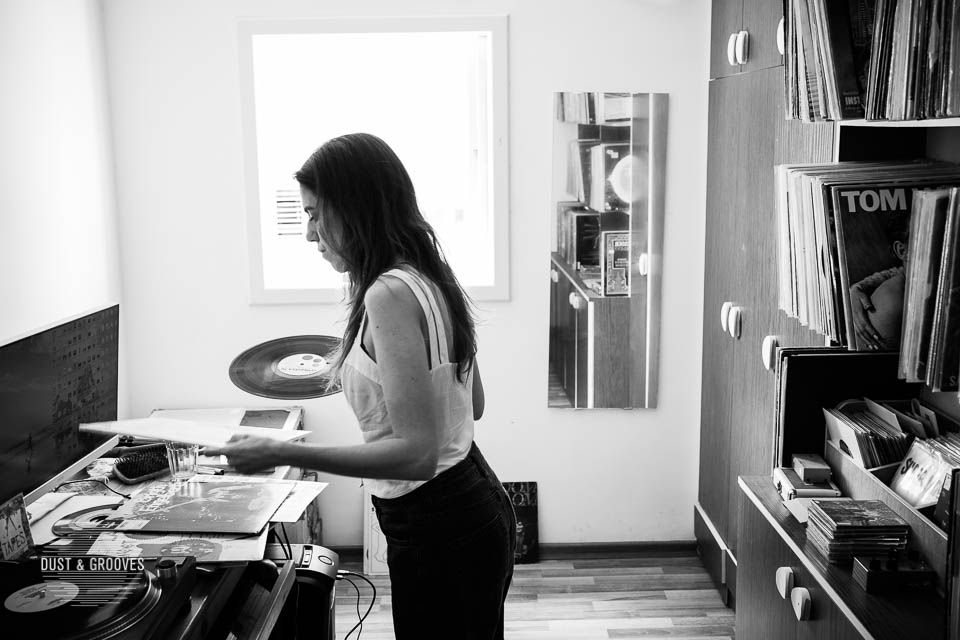
For many years, record collecting was largely considered a “boys club”. From your experience and interactions within this world, do you feel that this stigma is gone now?
To a certain extent – yes. But I’d be happy if there were more women in the scene. Sometimes I still feel like I’ve “got accepted to a boys club”, and it would be great to have more female friends to go digging with. But that didn’t really bother me when I started collecting and I don’t think anyone should be bothered by that. Most of my experiences have been that of mutual respect and support within the community – with no relation to gender.
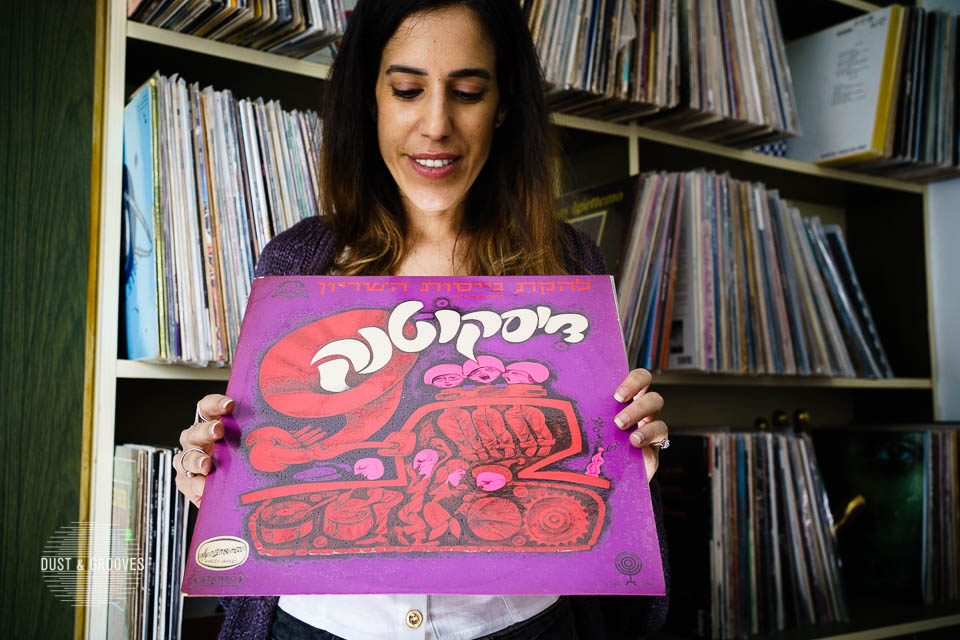 The Armoured Corps Variety Ensemble – Discotank. Israeli army band from 1971.
The Armoured Corps Variety Ensemble – Discotank. Israeli army band from 1971.
Favorite track: קרב יום. Known for the great drum-break in the beginning and deep enchanting sounds as the singer sings about what I would believe to be redemption day, asking for a light to guide the way.
In your most euphoric dreams, how do you imagine your perfect digger’s life?
I wish I could do it for a living: waking up at noon, digging up until the night and at night sample what I found to make something else out of it – and have someone pay me to do so every day instead of numb office work. Maybe even travel the world to dig as a profession. Quite a euphoric dream, right? 🙂
One last thing. Who would you like to see next on Dust & Grooves?
Find out more about Shira:

